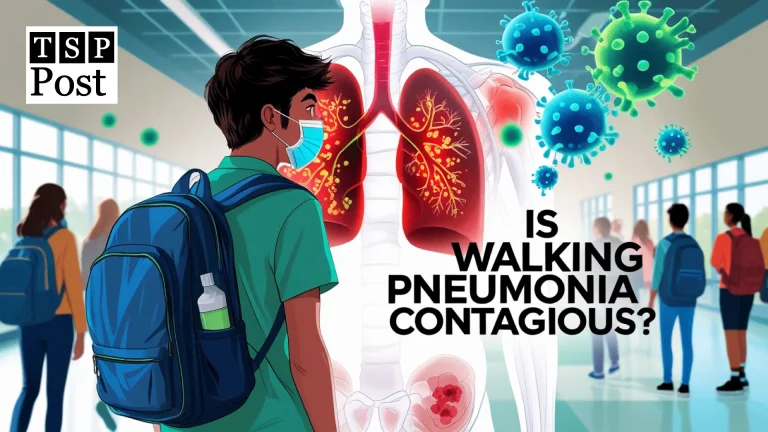Differentiating Between Causes of a Disease and Risk Factors
What are the Causes of a Disease & Risk Factors of a Disease?
A lot of the audience is confused about what are the causes of a disease and what are the risk factors of disease? To assess the causes of a disease and risk factors associated with disease phenotypes, it is obligatory to see through what are, these causes and risk factors in medical sciences. So, in epidemiology, a health-modifying agent is known as Cause. While risk factors are factors that increase a person’s chance of developing a disease. In this post we aim to pay attention to the causes of a disease and in addition, to discuss the risk factors of a disease. Please see detail information about the human abnormalities due to abnormal cells,”The Mystery Behind Several Disorders of Human are Different Types of Abnormal Cells”
Principally our target of discussion will be confined to infectious diseases. There are a group of diseases caused by microbes known as pathogenic microorganisms. These microorganisms are usually viruses, bacteria, fungi, parasites, etc. (WHO EMRO, n.d.). Almost all infectious diseases have some causing agents in the form of pathogenic organisms (such as viruses, bacteria, fungi, protozoa, helminths, etc.).
Causes of a Disease: Viral Invasion and Body Immune Response
Unquestionably, viruses belong to different groups. They invade the human body and use host body genomic DNA replicating machinery for its reproduction. Moreover, viral particles invade host body cells and pass through different stages (incubation, prodromal, illness, decline, convalescence) (Eske, 2021) to develop unhealthy phenotypes in the infected individual. In the meantime, the host’s immune system begins to fight against foreign antigens to remove them from the body. The host immune responses to the invaded viral particles come in different forms (i.e., cell-mediated immunity (e.g., T lymphocytes), Antibody, NK cells, and macrophages, lymphokines and monokines, etc.) (Klimpel, 1996). However, a weak immune system of the body facilitates invaded microbes to produce disease phenotype. For the same reason, table 01: shows some common viral diseases and their causing agents.
Causes of a COVID-19 Disease: The Recent Pandemic
Obviously, as organized in the table below, recently we have seen COVID-19 Pandemic across the world. Furthermore, according to the reported studies, severe acute respiratory syndrome coronavirus 2, (abbreviated as SARS-CoV-2) is the main cause of this disease. This virus infected a lot of humans, but some got disease, and some remained healthy. Undeniably, all those infected by this virus have some risk factors mentioned in the table. So, these risk factors play a leading role in disease morphology. In conclusion, according to the UNO COVID-19 Dashboard, this virus has infected approximately 768 million people belonging to almost all territories of the world. Despite COVID-19-infected, nearly 7 million have given up their lives. In contrast, the estimated death rate is approximately 1 in 110 in infected people (WHO coronavirus (COVID-19) dashboard, n.d.).
| Table 01: Virus Mediated Some Common Human Diseases | ||
| Viral Disease | Causing Agents | References |
| COVID-19 | SARS-CoV-2. | (Admin, 2018), |
| Common cold | Rhinovirus, coronavirus, and adenovirus | |
| acquired immunodeficiency syndrome (AIDS) | human immunodeficiency virus (HIV) | |
| Hepatitis | Hepatitis A/B/C viruses, | |
| Smallpox | Variola virus | |
| Herpes Zoster | varicella-zoster virus (common name chickenpox) | |
| Influenza | Influenza virus (RNA virus) | |
| Measles | Rubeola virus | |
| Mumps | Paramyxovirus | |
| Poliomyelitis | Poliovirus | |
| Encephalitis | Herpes Simplex Virus | |
| Rabies | Rabies lyssavirus | |
Causes of Microbial Infection-associated Human Disease
Although this may be true that approximately one trillion microbes exist on Earth. However, a very less number, about one in a billion, is considered human pathogen with a total figure of 1400 that is described as human pathogens (Microbiology by Numbers, 2011). Besides, human pathogens, bacteria are not always harmful to us. Most bacteria play essential roles i.e., vital to the health of living organisms. Therefore bacteria, having a beneficiary role, and described as “Good Bacteria”. However, few of them act like pathogens and compromise living organisms’ health. Therefore, these health-risk bacteria are known as “Pathogenic bacteria” (Balloux and van Dorp, 2017) that involve in causing roughly 26 human infection diseases.
These pathogenic bacteria can enter/transfer to humans either through zoonotic contact or through waterborne sources (Vouga and Greub, 2016). Then causes number of infectious diseases including Pneumonia, tetanus, typhoid, and tuberculosis (TB). Evidently in Table 02, some bacterial diseases along with their causing agents are tabulated.
| Table 02: Some Common Bacterial Diseases and Their Causing Agents | ||
| Bacteria Disease | Causing Agents | References |
| Pneumonia | Streptococcus pneumoniae | (Common bacterial diseases, 2022), (Vedantu, n.d., Reportable Invasive Bacterial Diseases, n.d.,) |
| Urinary tract infections (UTI) | Escherichia coli | |
| Meningitis | Neisseria meningitidis | |
| Tetanus | Clostridium tetani | |
| Syphilis | Treponema pallidum | |
| Pseudomonas | Pesudomonas aeruginosa | |
| Plague | Yersinia pestis | |
| Gonorrhoea | Neisseria gonorrhoeae | |
| Botulism | Clostridium botulinum | |
| Salmonesllosis | Salonella enteritis | |
Causes of Tuberculosis Disease
Tuberculosis (also known as TB) is an infectious disease. After all, Mycobacterium tuberculosis is the cause of morbidity and mortality in TB patients. Finally, TB is the 3rd leading cause of death (after COVID-19 and HIV) among infectious diseases. Please read in detail (Huang et al, 2022). Risk factors (given in Table) further enhance the chance of TB in the case of Mycobacterium tuberculosis infection.
Athlete’s Foot: An Example of Causes of a Mycosis (fungal infection) Disease
On the other hand, Athlete’s Foot is caused by Trichophyton rubrum, a dermatophytic fungus, and risk factors, which can enhance the chance of mycosis, are given in the table. Similarly, fungal infections are the causes of many diseases as described in Table 03.
| Table 03: Fungal Diseases and their Causing Agents | ||
| Fungal Diseases | Causing Species | References |
| Candidiasis | Candida albicans, C. glabrata, C. parapsilosisC. tropicalis | (Fungal Disease-Specific Research, n.d.) |
| Cryptococcosis | Cryptococcus neoformansC. gattii | |
| Aspergillosis | Aspergillus spp. | |
| Blastomycosis | Blastomyces dermatitidis | |
| Coccidioidomycosis (Valley Fever) | Coccidioides immitisC. posadasii | |
| Histoplasmosis | Histoplasma capsulatum | |
| Pneumocystis pneumonia | Pneumocystis jirovecii | |
Protozoa: The Major Causes of a Protozoal Disease
Surprisingly, protozoa are likely other microbes’ unicellular organisms. But unlike other microbes they are eukaryotic, having complex internal structure and metabolic activities. Protozoal Diseases are also one of the major classes of human infectious diseases. Here we take the case of some well-known examples of protozoal diseases and their causing agents (table 04).
| Table 04: Protozoal diseases and their causing agents | ||
| Protozoal Disease | Causing Agent of Protozoal Diseases | Reference |
| Amoebiasis | Entamoeba histolytica | (Admin, 2022), (Andrews et al, 2014) |
| African sleeping sickness | Trypanosoma brucei gambiense | |
| Cryptosporidiosis | Crytoptosporidium parvum Cryptosporidium hominis | |
| Diarrhoea | Giardia lamblia | |
| Inflammation of urogenital tract | Trichomonas vaginalis | |
| Leishmaniasis | Leishmania spp. | |
| Toxoplasmosis | Toxoplasma gondii | |
| Malaria | Plasmodium spp. | |
| Visceral disease | Leishmania | |
| Watery diarrhoea | Cryptosporidium | |
Helminths-mediated Human Diseases
On the whole, helminths describe parasitic worms. In fact, these worms are of two types, such as Playthelminthes and Nematoda. Thus, morphologically playtheminthes are flatworms and the other one is roundworms. Furthermore, these worms are the most common infection causing agents in humans (Hotez et al, 2008).
| Table 05: Helminths-mediated disease and their causing agents | ||
| Helminth-mediated Disease | Causing Agent | Reference |
| ascariasis | Ascaris or roundworm (Ascaris pneumonitis) | (Helminth infections: diagnosis and treatment, 2015), (Hotez et al, 2008) |
| cysticercosis | Taenia solium or pork tapeworm | |
| enterobiasis | Enterobius vermicularis or pinworm/threadworm | |
| schistosomiasis (bilharziasis) | Schistosoma mansoni | |
| taeniasis | Taenia saginata or beef tapeworm | |
| Trichururiasis | Trichuris trichiuria or whipworm, | |
| Echinococcosis (Hydatid disease) | Echinococcus granulosus Echinococcus multilocularis | |
| Filariasis | filariae nematode | |
| Onchocerciasis | Onchocerca volvulus | |
| Loiasis (African eye worm), | Loa loa | |
Risk Factors of a Disease
In brief, risk factors can only enhance the chance of disease, irrespective of initiating disease. So, disease-causing agents trigger disease in the body. Therefore, the severity of the disease depends upon the presence of risk factors. For instance (table 06). For example, recently we have gone through the COVID-19 pandemic due to the infection of SARS-CoV-2 virus, a causative agent of COVID-19. Different tests show that SARS-CoV-2 infected millions of people but many of them didn’t show signs and symptoms of the COVID-19 disease. However, many people developed severe COVID-19 conditions. In addition, Scientific data on COVID-19 patients show that its severity has strong correlation with diabetic and lung-cardiac problems (Puri et al., 2021).
| Table 06: Examples of Causes of Infectious Diseases and Risk Factors | ||||
| Disease | Disease Causing Agent (e.g) | Nature of Causing Agent | Risk Factors (chance increasing factors) | References |
| COVID-19 | severe acute respiratory syndrome coronavirus 2, (SARS-CoV-2) | Virus | Age (old) and Gender (male), Heart and lung diseases, Hypertension, Overexpression of (ACE2, TMPRSS2, and , Pro-inflammatory cytokines, etc.) | (Zhang et al, 2023) |
| TB | Mycobacterium tuberculosis | Bacteria | Personal (age/gender, immune system, alcohol, malnutrition, smoking)Social Contact (crowding, direct contact TB infected person, health occupational risk, improper ventilation, family history) Already patient of the following diseases (Diabetes, HIV infection, Bacillus Calmette–Guérin (BCG) scar) | (Narasimhan et al, 2013)(Kirenga et al, 2015) |
| Athlete’s foot | Trichophyton rubrum | Fungi | Personality base (age and gender)Activity based (physical activities , occupation) | (Perea et al, 2000) |
| Malaria | Plasmodium species (P. malariae, P.falciparum, P.vivax, P.ovale, and P.knowlesi) | Protozoa | Personality (age and gender, living in malaria infected area, types of residence (more chance in open house without net, worse hygenic condition) | (Talapko et al, 2019), (Nyasa et al, 2021) |
| Helminths | ||||
References:
- Admin 2018 Viral Diseases – Causes, Symptoms and Treatment. BYJU’S, 6 February. Available at https://byjus.com/biology/virus-viral-diseases/ [Last accessed 26 July 2023].
- Admin 2022 Protozoan Diseases – An Overview on Protozoal Infections. BYJU’S, 6 June. Available at https://byjus.com/biology/protozoan-disease/ [Last accessed 31 July 2023].
- Andrews, K T, Fisher, G, and Skinner-Adams, T S 2014 Drug repurposing and human parasitic protozoan diseases. International Journal for Parasitology: Drugs and Drug Resistance, 4(2): 95–111. DOI: https://doi.org/10.1016/j.ijpddr.2014.02.002
- Balloux, F and van Dorp, L 2017 Q&A: What are pathogens, and what have they done to and for us? BMC Biology. DOI: https://doi.org/10.1186/s12915-017-0433-z
- Common bacterial diseases 2022. University of Queensland. Available at https://imb.uq.edu.au/common-bacterial-diseases [Last accessed 26 July 2023].
- Eske, J 2021 The 5 stages of infection explained. Medical News Today. Available at https://www.medicalnewstoday.com/articles/5-stages-of-infection [Last accessed 24 July 2023].
- Fungal Disease-Specific Research n.d. NIH: National Institute of Allergy and Infectious Diseases. Available at https://www.niaid.nih.gov/diseases-conditions/fungal-disease-specific-research [Last accessed 26 July 2023].
- Helminth infections: diagnosis and treatment 2015. The Pharmaceutical Journal. Available at https://pharmaceutical-journal.com/article/ld/helminth-infections-diagnosis-and-treatment, [Last accessed 31 July 2023].
- Hotez, P J, Brindley, P J, Bethony, J M, King, C H, Pearce, E J, and Jacobson, J 2008 Helminth infections: the great neglected tropical diseases. Journal of Clinical Investigation, 118(4): 1311–1321. DOI: https://doi.org/10.1172/jci34261
- Huang, Y, Ai, L, Wang, X, Sun, Z, and Wang, F 2022 Review and Updates on the Diagnosis of Tuberculosis.Journal of Clinical Medicine. DOI: https://doi.org/10.3390/jcm11195826
- Kirenga, B J, Ssengooba, W, Muwonge, C, Nakiyingi, L, Kyaligonza, S, Kasozi, S, Mugabe, F, Boeree, M, Joloba, M, and Okwera, A 2015 Tuberculosis risk factors among tuberculosis patients in Kampala, Uganda: Implications for tuberculosis control. BMC Public Health. DOI: https://doi.org/10.1186/s12889-015-1376-3
- Klimpel, G R 1996 Chapter 50: Immune Defenses. Medical Microbiology. 4th edition. Available at https://www.ncbi.nlm.nih.gov/books/NBK8423/ [Last accessed 24 July 2023].
- Microbiology by numbers 2011. Nature Reviews Microbiology. DOI: https://doi.org/10.1038/nrmicro2644
- Narasimhan, P, Wood, J, Macintyre, C R, and Mathai, D 2013 Risk factors for tuberculosis. Pulmonary Medicine. DOI: https://doi.org/10.1155/2013/828939
- Nyasa, R B, Fotabe, E L, and Ndip, R N 2021 Trends in malaria prevalence and risk factors associated with the disease in Nkonghombeng; A typical rural setting in the equatorial rainforest of the South West Region of Cameroon. PLoS ONE. DOI: https://doi.org/10.1371/journal.pone.0251380
- Perea, S, Ramos, M J, Garau, M, Gonzalez, A, Noriega, A R, and Del Palacio, A 2000 Prevalence and risk factors of tinea unguium and tinea pedis in the general population in Spain. Journal of Clinical Microbiology. DOI: https://doi.org/10.1128/jcm.38.9.3226-3230.2000
- Puri, G., Singh, V. P., & Naura, A. S. (2021). COVID-19 severity: Lung-Heart interplay. Current Cardiology Reviews, 17(4). https://doi.org/10.2174/1573403×16999201210200614
- Reportable Invasive Bacterial Diseases n.d. MN Dept. of Health. Available at https://www.health.state.mn.us/diseases/invbacterial/basics.html [Last accessed 26 July 2023].
- Talapko, J, Škrlec, I, Alebić, T, Jukić, M, and Včev, A 2019 Malaria: The past and the present. Microorganisms. DOI: https://doi.org/10.3390/microorganisms7060179
- Vedantu n.d. Bacterial Diseases in Humans. Vedantu. Available at https://www.vedantu.com/biology/bacterial-diseases-in-humans [Last accessed 26 July 2023].
- Vouga, M and Greub, G 2016 Emerging bacterial pathogens: The past and beyond. Clinical Microbiology and Infection. DOI: https://doi.org/10.1016/j.cmi.2015.10.010
- WHO coronavirus (COVID-19) dashboard n.d. WHO Coronavirus (COVID-19) Dashboard With Vaccination Data. Available at https://covid19.who.int [Last accessed 25 July 2023].
- WHO EMRO n.d. World Health Organization – Regional Office for the Eastern Mediterranean. Available at https://www.emro.who.int/health-topics/infectious-diseases/index.html [Last accessed 25 July 2023].
- Zhang, J jin, Dong, X, Liu, G hui, and Gao, Y dong 2023 Risk and Protective Factors for COVID-19 Morbidity, Severity, and Mortality. Clinical Reviews in Allergy and Immunology. DOI: https://doi.org/10.1007/s12016-022-08921-5






